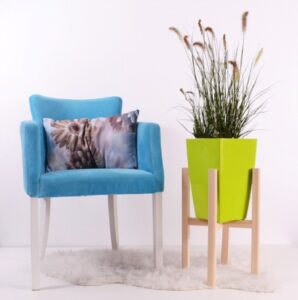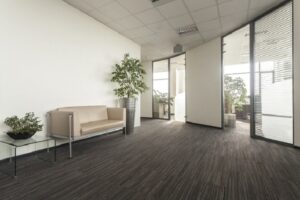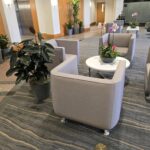Potted plants are a great way to add greenery to your home and business, but they need the right soil to thrive. Choosing good potting soil is important! Not all potting soils are created equal, and choosing the wrong one can lead to problems like root rot, nutrient deficiencies, and stunted growth.
Here are some of the reasons why choosing good potting soil is important:
- Good drainage. Potting soil needs to be well-draining so that the roots don’t sit in water. This can lead to root rot, which is a serious fungal infection that can kill plants.
- Aeration. Potting soil also needs to have good aeration so that oxygen can reach the roots. This helps the roots to breathe and absorb nutrients.
- Nutrients. Potting soil should contain the nutrients that plants need to grow and thrive. These nutrients are typically added in the form of compost or fertilizer.
- The right pH. The pH of the soil is important for plant health. Most plants prefer a slightly acidic soil, with a pH of around 6.0 to 7.0.
When choosing a potting soil, it’s important to consider the type of plant you’re growing. Some plants, such as succulents and cacti, need a potting soil that is specifically designed for their needs. Others, such as vegetables and herbs, can do well with a more general-purpose potting soil.
What is hydrophobic soil?
There are a few reasons why hydrophobic soil can form. One reason is that when organic matter decomposes, it releases fatty acids and waxes. These substances can coat the soil particles and make them hydrophobic. Another reason is that when soil dries out, the water molecules on the surface of the soil particles can evaporate, leaving behind a thin layer of water vapor. This water vapor can also act as a barrier to water penetration.
Hydrophobic soil can be a problem for plants because it can prevent them from getting the water they need to survive. When water cannot penetrate the soil, it will simply run off the surface, leaving the roots of the plants dry. Hydrophobic soil can lead to wilting, stunted growth, and even death of your plants.

Container size matters
You should also consider the size of the pot you’re using. If you’re planting a small plant in a small pot, you won’t need as much potting soil as you would if you were planting a large plant in a large pot.
There are a few things to consider when choosing a container for your indoor plant:
- Drainage: The container must have drainage holes to allow excess water to escape. This will help prevent root rot, a common problem for indoor plants.
- Size: The container should be only slightly larger than the plant’s root ball. This will help ensure that the soil doesn’t stay too wet, which can also lead to root rot.
- Material: The material of the container can affect how quickly the soil dries out. Terracotta pots are porous and allow water to evaporate quickly, while plastic pots retain moisture for longer. Consider the type of plant you have and how often you water it when choosing a material.
- Weight: If you have a large plant, you’ll need a heavy container to prevent it from tipping over. Terracotta pots are a good option for heavy plants, as they are both strong and heavy.
- Aesthetics: Of course, you also want to choose a container that you like the look of! There are many different styles and colors of containers available, so you’re sure to find one that matches your décor.
Fertilize Your Plants
Once you’ve chosen the right potting soil, be sure to fertilize your plants regularly. This will help to ensure that they have all the nutrients they need to grow and thrive.
Here are some additional tips for choosing a good potting soil:
- Read the label carefully. The label should list the ingredients in the potting soil and the pH level.
- Look for potting soils that are labeled as “organic” or “natural.” These potting soils are made from recycled materials and are less likely to contain harmful chemicals.
- Avoid potting soils that are too fine or too coarse. Fine potting soils can compact easily, making it difficult for roots to breathe. Coarse potting soils can drain too quickly, leading to root rot.
- If you’re not sure what type of potting soil to choose, ask a gardening expert for advice.

Nivtop Creations knows how to choose the right potting soil for your plants and help them to grow healthy and strong. Our Plant Maintenance Program will ensure that you plants have the right care, soil and fertilizer they need to thrive in your environment.




